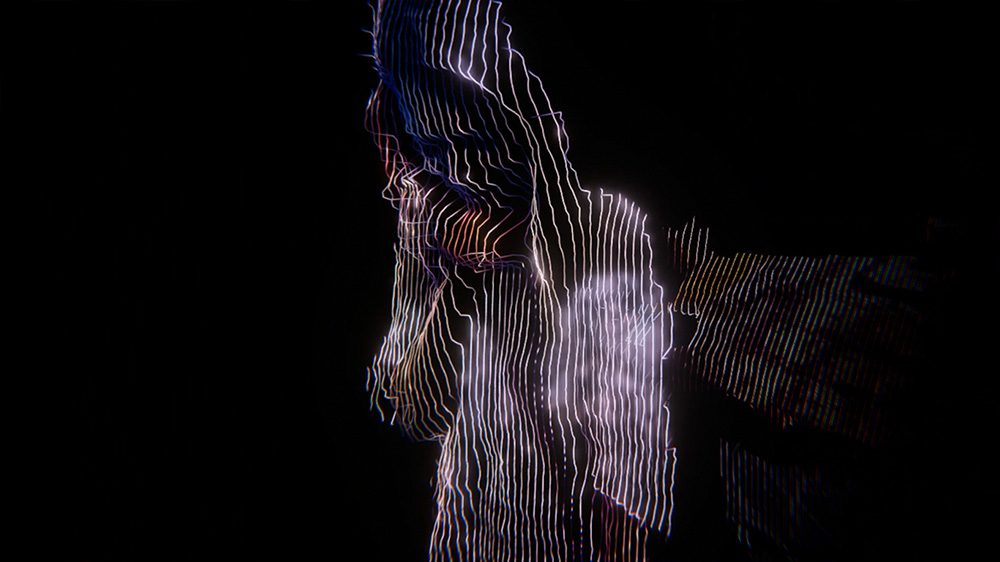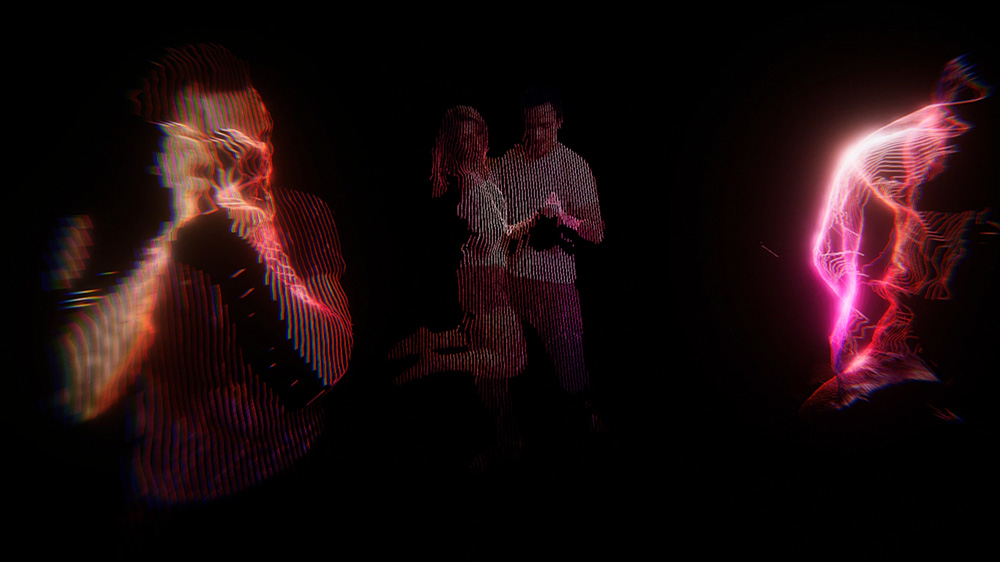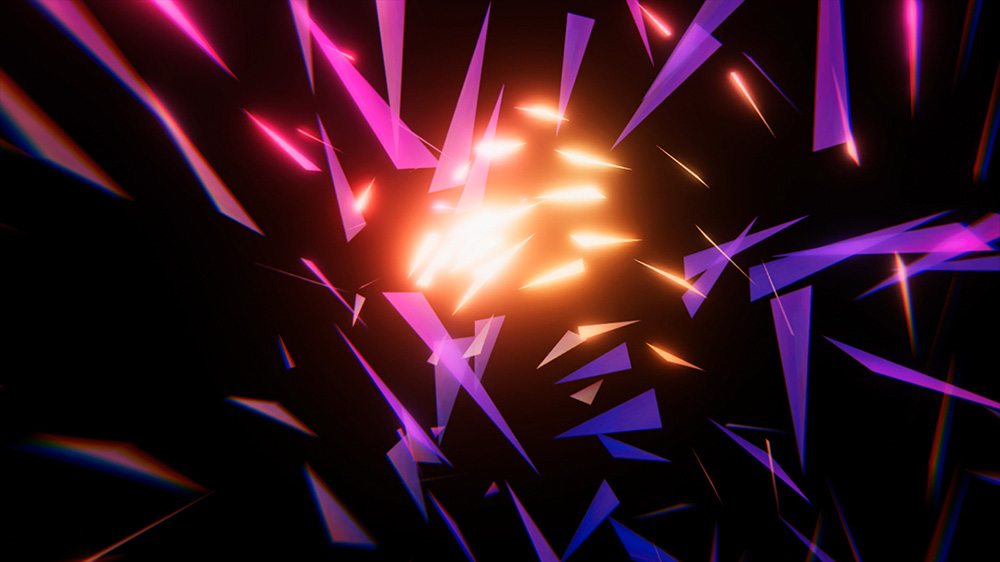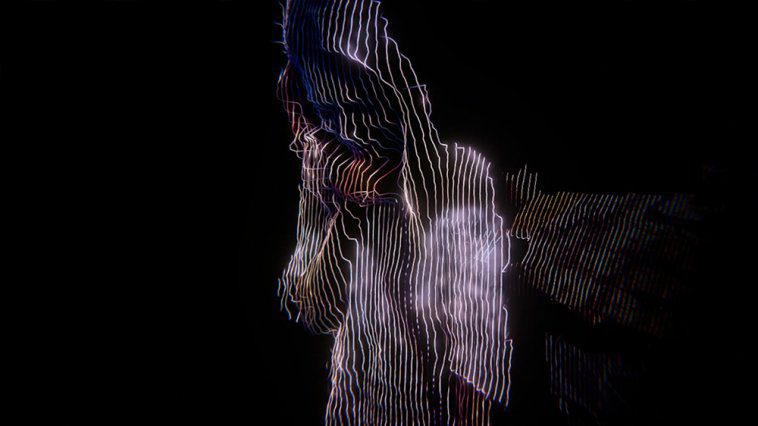Letting go of a loved one is one of the most challenging things a person will do. The development team at NSC Creative sought to create a raw, emotional VR experience that captured the torrent of feelings that goes along with the grieving process. We sat down with them to hear what went into this critically-acclaimed journey.
Interview by Nathan Ortega, Viveport
Tell us a bit about yourself and the team
I’m Aaron Bradbury, director on Vestige. For the past 10 years I’ve been working at NSC Creative, which is based at the National Space Centre in the UK. Between what I do there and my personal projects I’ve worked on many different flavors of immersive media. My background is in the arts, and traditional image and film making and these sensibilities are the leading factors in how I approach ideas.
For Vestige, I was able to bring one of my personal projects to the NSC Creative studio and work with the amazing team there to develop ideas and techniques as well as actually bring the project to life.
We also got some external talent involved in the project; from the very start I worked with my brother on the programming and development side. He developed a set of tools called the ‘interactive narrative toolkit’ to help create VR specific interactions using gaze and proximity variables from the viewer to control the experience. Another key collaborator was Robbie Newman from Snug Recording. I’ve worked with Robbie on several projects before with demanding audio interactivity and spatial requirements. For Vestige he developed some new techniques regarding the flow of music within a temporally variable experience but also I think he’s really pushed the capabilities of audio as a tool to compose the viewer and curate movement within the experience.
Vestige is an incredibly personal experience dealing with the loss of a loved one, drawing deep inspiration from a real person’s tragic loss of their partner. Tell us what it was like to collaborate with someone processing such a loss in order to bring that raw experience to VR.
Initially Vestige was to be a fictional piece about the memory of lost love. It was during my presentation at DevLab in 2016 that I talked about the challenges of telling this story without having experienced death this closely. It was then Jill Basmajian from Kaleidoscope who put me in touch with her friend Lisa. She said “you need someone to talk to you, and Lisa needs someone to talk to.” So at first we spoke without any idea the recordings would end up being in the final piece. It wasn’t long before I felt the power of Lisa’s testimony and realized that Vestige should be her story.
During the year of regular interviews with Lisa, I witnessed her transformation through grief. Our first interviews took place only a few months after her husband Erik passed away. She often spoke of the ‘black abyss’, where she was trapped in cyclic memories of Erik’s death. Memories that were triggered by anything that was even slightly connected to Erik; Christmas, birthdays, skiing, the sofa, the salad bar. In the most recent interviews, she talked about some of the positive changes in her life brought about from the grieving process. She takes opportunities to experience new things, she’s trying to live in the moment, trying to define new meaning in her life.
For Lisa, the Vestige interviews have been a big part of the grieving process. On some occasions we spoke over 3 hours, giving time to cry, to laugh, and occasionally drink wine. Being able to talk openly about all aspects of her grief has helped her navigate her memories and rebuild them from a different perspective. In her words, “It will have lasting resonance”.
From my perspective, I loved speaking with Lisa. It was a very powerful part of my life, a special and privileged time when I got to hear something people usually keep inside. I battled with my own social barriers too, constantly rethinking how I word questions to make sure I’m not being disrespectful in any way… Something Lisa was acutely aware of and commented on how British it was. Eventually, I was able to talk more frankly about grief with Lisa and now we’ve become good friends.

Talk a bit about your previous experience developing VR projects and how they helped inform the direction of Vestige
I learnt some crucial lessons from my previous VR film LoVR. I experimented with immersion as a narrative tool. Reducing down the environment in order to maintain focus on the important story points but also broadening the environment to induce sensations that reflect the story. There’s an ‘explosive’ moment in LoVR when the two characters first look into each other’s eyes. Just before that moment, the environment is reduced to a single thin line moving through the blackness of space, so the explosion of color when paired with the camera movement feels disorientating and overwhelming and reflects meaning in the narrative. In Vestige, a similar technique is used for the moment of Erik’s death. He metaphorically explodes into fragments surrounding the viewer, followed by a barrage of memories spatially positioned to engulf the viewer. The result is emotionally overwhelming and the experience becomes part of the narrative.
Were there any concepts, sequences or ideas that you wanted to work into Vestige but just couldn’t find a way to make it fit?
We had to drop a number of sequences and ideas due to time and budget constraints. The complexities involved in creating a multi-narrative experience mean that each additional branch comes with a large amount of work to figure out all the possible permutations, shoot multiple stories, implement the triggers and then test these within the experience, which means you have to test each incoming and outgoing branch for each story node.
One story we dropped right at the end was about how everything in their apartment had a story, and everything triggered memories of their time together. I really loved this scene. It also offered the opportunity to include triggers for additional storylets when a viewer approached specific objects in the scene.
There was a beautiful story about some ceramic gifts Erik bought for Lisa even though he didn’t like them initially. I actually shot Lisa telling this story in the apartment in Utah during Sundance and it would have been great to get Lisa in the experience. In the end, this was dropped simply for being too long and I just couldn’t quite get it down without losing the intent.
A reactive idea we dropped was an idea to add hospital elements to the scene every time you turned away from a scene. So as you looked back at memories, each time they would become more cluttered with the memory of the hospital. This was something that came out of the early interviews with Lisa when most of her memories gravitated towards the memory of the hospital.
We dropped an idea to have the barrage of memories triggered from each shard as you looked around at the end of the experience. I still think this would be a very powerful experience and one which would leave you wanting to go back through to hear more.
What have been some of the biggest challenges in developing an emotionally engaging VR experience like Vestige?
One of the biggest challenges was actually raising enough budget to realize the vision of the project. Many funders said it was too sad and they didn’t understand the ambition we had for it to be a transformative experience that would bring new audiences to VR. The prototype we demoed at the Kaleidoscope Development Showcase during SXSW 2017 was a massive turning point. We met Atlas V who became our first co-producer and brought in funding from the amazing CNC in France. Then the awesome folks at RYOT joined the team and Other Set acquired the distribution rights just before Tribeca.
Outside of funding, our technical director is a sensitive soul and was unable to watch through the experience without getting emotional which was a challenge when he had to test it for the 100th time.
Speak a bit about your thoughts regarding the roll VR has in the interactive art scene and what developments you hope to see in the future
Having worked on many flavors of interactive art over the years, a thing I find really enticing about VR is the ability to gather detailed information about the viewer that can influence the story without any conscious intervention. The way people move can be very revealing and this could be used to tell a story specific to that person. So at its most basic, if the viewer doesn’t move much, you could deliver a story that doesn’t require much movement, but what would it mean if you were to try and make them move? This feels bundled with ethical debates but I think this will be an interesting area of exploration.
I hope to see some toolsets being developed to make it easier for artists to add basic functionality to a project to speed up experimentation and exploration. Things like nodal branching or multi user functionality.
I think wireless headsets and alternative physical interactive devices will be key for location based art in the future. The controls give a very specific tactile experience, which I felt wasn’t appropriate for Vestige but I could see physical elements being used to influence and augment experiences within VR really effectively.
How many people are on your team and how long has it taken to develop Vestige?
Vestige as an idea appeared in a sketchbook from around 2012 but it really began its life at DevLab in November 2016. From that it took a year to secure the funding and complete the pre-production and prototype. It was then a swift 5 weeks of intense production including the volumetric live action shoot and development to get it ready for its world premiere at Tribeca Film Festival. After that we spent an additional 3 months on refining the experience and finalizing the public release for 360 video, fulldome and roomscale 6DOF VR.
The main production team on Vestige consisted of myself and five talented humans: Duane Bradbury, Jo Dyer, Stephen Long, Robbie Newman and Neil Smith. The shoot had a very small crew of five and two actors. The producers Paul Mowbray, Antoine Cayrol and Jill Basmajian kept everything on track along with lots of support from other folks across the co-production companies and distributors Other Set. It’s also essential to give a shout out to the DepthKit crew, without their amazing tool set that democratizes volumetric capture we would have not have been able to create this project.

Vestige was exhibited at Tribeca Film Festival this year. Tell us a bit about that experience and how that has differed from previous projects you’ve exhibited.
Tribeca was different to any previous exhibitions or festivals I have exhibited work at. There’s a huge media presence, so most mornings consist of press interviews and trying to make sense after spending every hour leading up to the opening working on the project and not sleeping. There’s celebrities consistently floating through surrounded by the buzz of celebrity attraction. There are free drinks… and free Nutella crepes. Seriously, free Nutella crepes.
Tribeca knows how to party!
For the actual installation we created a “fragmented memory landscape” which involved a bespoke domed structure featuring a physical manifestation of the shards used in the story overlaid with projection mapped visuals. Another layer was added where people could leave their own message about a lost loved one in a phone booth. This acted as a decompression area for those that were particularly moved by the experience. This testimony was then played to other festival goers via telephones hanging from the structure to create a unique snapshot of people’s responses to the piece at a given time and location.
Did you get any feedback from users that surprised you?
Something I find fascinating is people’s inability to remember the branching narrative stories immediately after the experience. I find it really useful to talk to people when they come out of the experience. After realizing that someone couldn’t remember seeing a specific item until I prompted them, I started asking other people and getting similar responses. The reason this fascinates me is because of the first interview with Lisa. We’re talking about why she’s decided to talk to me and she says it’s because she feels like she’s losing Erik and wants someone to help lead her back to her memories of him. I thought about this statement a lot. Trying to understand how you can still feel like you’re losing someone, even after their death? As time went on and Lisa was able to remember more moments with Erik I felt the reason she was unable to remember Erik in the months following his death was because of the traumatic memory of his death. This was a polarizing thought with gravity so strong that she was unable to remember anything beyond it. So just like Lisa, when people leave Vestige, their memories are fixated on the singular moment of Eriks death.

What do you ultimately want users to take away from their time with Vestige?
Death is a hard subject to talk about. We shield ourselves from it and avoid the discussion. But when this happens, the shields become barriers, trapping our emotions and making it hard to escape the grief it causes. I hope that Lisa’s story in Vestige will create conversation. Death and grief touches everyone at some point and it’s important to understand the effect it can have. I hope the project will also offer some light to those trapped in the black abyss, that grief can be seen as not just a state of being but a transition that can have a positive transformational effect.
What’s next for you and the team? Can we expect to see more emotionally engaging VR experiences from you on the horizon?
Yes. We’re currently working on a new project which can only be described as an existential nightmare. The idea is in the early stages and still very fluid, but it’s borrowing a number of techniques we developed for Vestige and building on top of them in interesting ways. Even the early sketches we’ve been putting together are incredibly unsettling and provoking.
Sounds intense! We can’t wait to see and hear more. Thank you for speaking to us!
Vestige VR is out now on Viveport and via Viveport Subscription
Website: LINK


